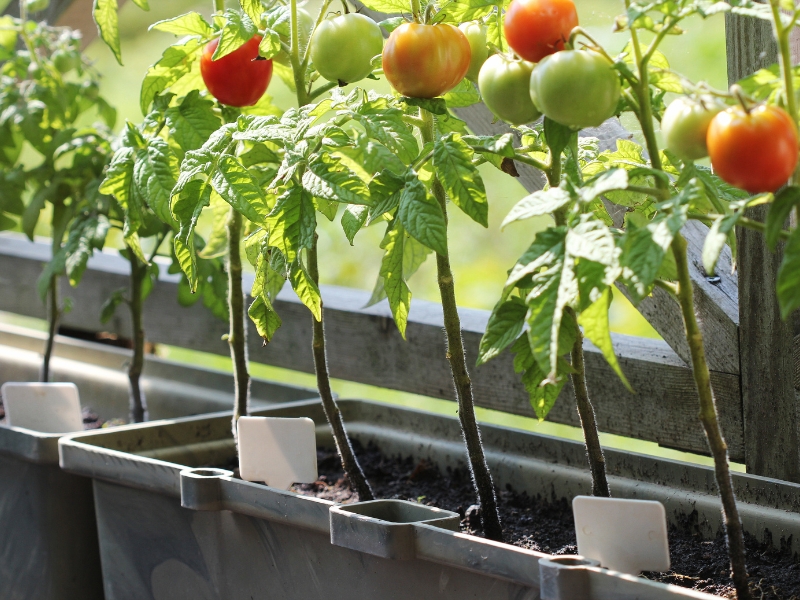
Dreaming of a thriving edible garden that feeds your family and adds a touch of natural beauty to your Sydney home? You’re in the right place. Sydney’s diverse climate and rich soil provide the perfect conditions for cultivating various fruits, vegetables, and herbs. This guide explores the key benefits, creative design ideas, climate considerations, seasonal care, and the value of professional garden services for your edible garden.
What Are the Key Benefits of an Edible Garden?
Edible gardens are increasingly popular among homeowners and businesses for many reasons, including:
- Fresh and Organic Produce: Growing your fruits, vegetables, and herbs gives you easy access to organic, pesticide-free food. Nothing beats the flavour of produce harvested fresh from your garden!
- Cost Savings: A productive edible garden can reduce grocery bills, particularly as food costs continue rising. Even a tiny garden with seasonal crops can make a difference.
- Environmental Benefits: Growing your food can reduce the carbon footprint of transporting goods to supermarkets. Additionally, edible gardens often attract pollinators, supporting the local ecosystem.
- Health Benefits: Gardening encourages physical activity, provides access to healthy food, and has mental health benefits. Spending time outdoors in your garden can reduce stress and increase well-being.
- Aesthetic Appeal and Versatility: Edible gardens are practical and beautiful. With the right design, you can create a stunning landscape feature that doubles as an edible garden.
What Are Some Creative Ideas for Designing an Edible Garden?
Designing an edible garden requires a balance between aesthetics and functionality. Here are some inspiring ideas to consider:
- Herb Spirals: Herb spirals are a compact and visually appealing way to grow various herbs. This design conserves water, provides good drainage, and allows you to plant different herbs based on their sun and water needs.
- Raised Garden Beds: Raised beds offer better soil control, reduce back strain, and can be used to create designated areas for different crops. They’re also ideal for Sydney’s sometimes-challenging soil.
- Vertical Gardens: If space is limited, vertical gardens are an excellent solution. They can be placed against walls, fences, or trellises to grow climbing plants like beans, peas, or strawberries.
- Companion Planting: Grouping compatible plants can promote healthy growth and pest resistance. For example, planting basil with tomatoes enhances the tomatoes’ flavour and helps repel pests.
- Border Gardens with Edible Plants: Create edible garden borders with lettuce, kale, or even flowers like nasturtiums. This keeps edible plants within arm’s reach while framing your garden beautifully.
- Mixed Edible and Ornamental Plants: Blending edible plants with flowering plants or shrubs can make your garden more visually appealing while still being functional. For example, rosemary pairs well with lavender for looks and maintenance needs.
What Are the Ideal Climate Conditions for an Edible Garden in Sydney?
Sydney’s subtropical climate, while supporting many plants, also presents some challenges. Understanding these conditions will help ensure your garden thrives year-round:

- Summer (December – February): Sydney’s summers are hot and dry, often exceeding 26°C. Drought-tolerant and sun-loving plants, such as tomatoes, zucchini, and peppers, thrive in these conditions. Be mindful of watering practices and mulch heavily to retain soil moisture.
- Autumn (March- May): The cooler autumn temperatures are ideal for planting cool-season crops like broccoli, spinach, and carrots. Use this season to prepare soil and plant winter-hardy vegetables.
- Winter (June – August): Sydney’s winters are mild, with occasional frosts. Frost-tolerant vegetables such as cauliflower, cabbage, and broad beans are ideal. Pruning and maintenance are vital during this season as growth slows down.
- Spring (September – November): With warming temperatures and increased rainfall, spring is a fantastic time for planting various vegetables. Plant warm-season vegetables like cucumbers, capsicums, and eggplants, and add new herbs or flowering plants.
How Can You Prepare Your Edible Garden for Each Season?
Preparing your garden for the changing seasons ensures optimal growth and productivity. Here’s a seasonal guide to Sydney’s climate, tailored to help you implement effective edible garden design strategies:
- Spring Preparation: Clear out winter debris, replenish mulch, and fertilise soil as needed. Spring is the time to sow seeds for fast-growing vegetables like lettuce, radishes, and carrots.
- Summer Care: During the hot, dry months, it is crucial to water deeply and apply mulch to retain moisture in the soil. Understanding the importance of healthy soil for gardening is vital to nurturing solid and productive plants, as nutrient-rich soil provides the foundation for growth, resilience, and high yields in your edible garden.
- Autumn Transition: Prune any overgrown plants, clean up fallen leaves, and remove spent summer crops as temperatures cool. Plant winter vegetables and add compost to enrich the soil.
- Winter Maintenance: Cover frost-sensitive plants and reduce watering frequency. Add organic matter to improve soil health and continue seasonal pruning and pest control.
- All-Season Tips: To keep your garden healthy throughout the year, ensure you use high-quality soil, maintain good airflow between plants, and implement organic pest control.
How Can Professional Garden Services Help You Design and Maintain a Garden?
Creating a productive edible garden can be complex, especially if you’re new to gardening. Here’s how the experts can help:

- Custom Garden Planning: Professionals assess your space, soil type, and sunlight exposure to create a personalised garden design. This plan includes selecting the right plants that complement each other, grow well in your area, and produce high yields.
- Efficient Seasonal Preparation: Garden services can prepare your garden for each season, from winter pruning to spring planting, by understanding local climate patterns. This ensures your plants stay healthy and productive all year.
- Ongoing Maintenance and Support: Regular maintenance services, including weeding and soil conditioning, keep your garden at its best. Professionals can also identify and address plant diseases or pest issues before they affect your harvest.
- Expert Guidance on Edible Plants: Garden experts understand which edible plants work well in local conditions. They can guide you on plant varieties, companion planting, and crop rotation for a bountiful harvest and a balanced ecosystem.
Conclusion
Designing an edible garden in Sydney’s unique climate is a rewarding way to enjoy fresh produce, add beauty to your landscape, and contribute to a more sustainable lifestyle. With proper planning, seasonal preparation, and plant selection, you can create a garden that thrives annually.
Transform your garden with All Green Gardening & Landscaping
Ready to create a stunning and productive edible garden in Sydney? All Green Gardening & Landscaping is here to help bring your vision to life. Whether you’re starting from scratch or enhancing an existing garden, we’ll be with you every step of the way. From personalised design to ongoing maintenance, we ensure your edible garden thrives in Sydney’s unique climate. Contact All Green Gardening & Landscaping today to learn more about how we can help you grow a beautiful, productive garden that you’ll enjoy all year round.
